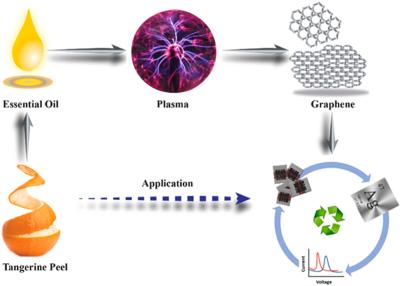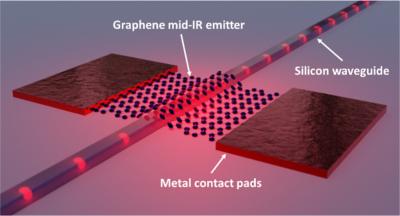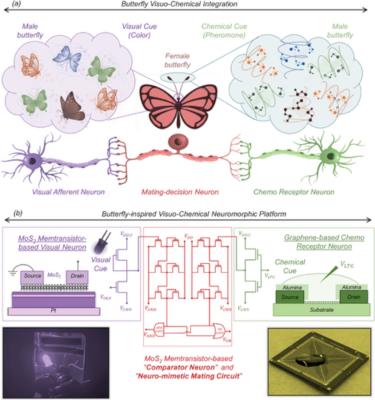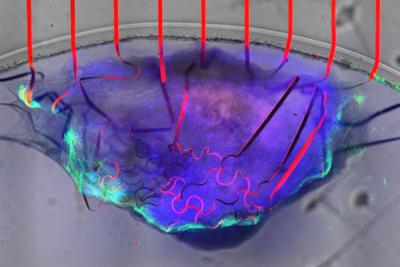Graphene sensors: introduction and market status - Page 2
Researchers report green synthesis of graphene for targeted recovery of silver from photovoltaic waste
In 2015, scientists at James Cook University in Queensland, Australia, and collaborators from institutions in Australia, Singapore, Japan, and the US developed a technique for growing graphene from tea tree extract. Now, scientists from James Cook University developed a process to synthesize graphene from tangerine peel oil, which they then used to recover silver from waste PV material. To demonstrate the quality of the recovered silver and the synthesized graphene, they made a dopamine sensor that reportedly outperformed reference devices.
The team synthesized “freestanding” graphene using non-toxic and renewable tangerine peel oil that can reportedly be used for the recovery of silver from end-of-life organic PV devices. The researchers said that their process result in high-quality graphene and demonstrated a remarkable ability to selectively recover silver from photovoltaic waste. One of the most surprising findings, according to the team, was how selective the graphene was in targeting silver.
Researchers develop graphene-based sensor that enhances temperature monitoring reliability
Researchers from the Czech Republic's Palacký University’s CATRIN, the University of West Bohemia, and VSB-TUO have developed an innovative sensor capable of accurately measuring temperatures between 10 and 90 degrees Celsius. This novel sensor, based on a novel graphene derivative, stands out for its high precision, reliability, and resistance to humidity. Its applications range from industrial production and storage areas requiring remote temperature monitoring to integration into protective clothing.
“We developed the new material using fluorographene chemistry by removing fluorine atoms and attaching benzylamine to the available reactive sites. This proved to be a crucial step in creating the temperature sensor. This technology allowed us to significantly minimize the adverse effects of humidity, typically the most challenging issue for such devices,” explained Petr Jakubec from CATRIN, a co-author of the study published in the prestigious journal Advanced Electronic Materials.
Researchers design graphene-based infrared emitter for integrated photonic gas sensors
Researchers at AMO GmbH, KTH Royal Institute of Technology, Senseair AB and the University of Bundeswehr have developed a waveguide-integrated incandescent thermal mid-infrared emitter using graphene as the active material. This innovative approach is said to significantly enhance the efficiency, compactness, and reliability of gas sensor systems, paving the way for widespread applications across various industries.
Many applications require robust, real-time air quality monitoring solutions, driving the demand for distributed, networked, and compact gas sensors. Traditional gas sensing methods, including catalytic beads and semiconducting metal oxide sensors, suffer from performance degradation, frequent calibration needs, and limited sensor lifetimes due to their reliance on chemical reactions. Absorption spectroscopy offers a promising alternative by utilizing the fundamental absorption lines of several gases in the mid infrared (mid-IR) region, including greenhouse gases. This method provides high specificity, minimal drift, and long-term stability without chemically altering the sensor. The ability to “fingerprint” gases through characteristic absorption wavelengths, such as carbon dioxide (CO2) at 4.2 μm, makes it a promising technology for precise gas detection.
Researchers develop graphene-based battery-free lactic acid sensor
Scientists at the University of Bath, working in collaboration with Integrated Graphene, have created a new type of chemosensor (demonstrated for lactic acid sensing) which functions with electricity but without the need for reference electrodes or battery power. The new design potentially offers lower cost, better shelf-life, and ease of miniaturization compared to enzyme-based sensors. This could open up the possibility for an easy-to-use sensor to be used in remote locations, such as an athletics track, without the need for electricity-powered sensing equipment.
The sensor was able to detect lactic acid, a by-product generated by the body when it metabolizes carbohydrates or glucose for fuel, for example, during exercise. High levels of lactic acid are linked with higher risks of falling unconscious or into a coma and major organ failure.
Researchers propose "Universal Murray's Law" for synthetic materials
Researchers from the University of Cambridge, Tokyo Institute of Technology, University of Warwick and University of Namur have proposed a new materials theory based on "Murray's Law," applicable to a wide range of hierarchical structures, shapes and generalized transfer processes.
The scientists experimentally demonstrated optimal flow of various fluids in hierarchically planar and tubular graphene aerogel structures to validate the proposed law. By adjusting the macroscopic pores in such aerogel-based gas sensors, they also showed a significantly improved sensor response dynamics.
Tachmed partners with St George’s, University of London, to advance graphene-based health diagnostic platform
Tachmed, a UK-based developer of at-home digital healthcare solutions, has teamed up with experts in infection control at St George’s, University of London, to help accelerate the development of a new diagnostic platform for a range of health conditions, using graphene biosensor technology.
During the four-month collaboration, funded by an Innovate UK Accelerated Knowledge Transfer grant, Dr. Henry Staines, senior lecturer in global health at the Institute for Infection & Immunity at St George’s, will provide critical knowledge exchange. This is expected to boost development of the technology by optimizing Tachmed’s biosensor, which is required to confirm if a pathogen is present or not within a patient sample.
Graphene Trace secures £300k to tackle pressure ulcers
Graphene Trace, a UK-based startup that aims to use sensors to eradicate the problem of pressure ulcers, has been awarded a £300,000 grant by Innovate UK.
The startup believes its proprietary sensor technology for wheelchair users and hospital inpatients could reduce pressure ulcer onset by up to 95%. CEO Scott Dean said the grant will fund the creation of a prototype for its pressure ulcer prevention technology and bring it a step closer to going to market.
Researchers design a butterfly-inspired multisensory neuromorphic platform for integration of visual and chemical cues
It is a known fact that animals require the integration of cues collected from multiple sensory organs to enhance the overall perceptual experience and thereby facilitate better decision-making in most aspects of life. However, despite the importance of multisensory integration in animals, the field of artificial intelligence (AI) and neuromorphic computing has primarily focused on processing unisensory information. This lack of emphasis on multisensory integration can be attributed to the absence of a miniaturized hardware platform capable of co-locating multiple sensing modalities and enabling in-sensor and near-sensor processing.
a) A simplified abstraction of visual and chemical stimuli from male butterflies and visuo-chemical integration pathway in female butterflies. b) Butterfly-inspired neuromorphic hardware comprising of monolayer MoS2 memtransistor-based visual afferent neuron, graphene-based chemoreceptor neuron, and MoS2 memtransistor-based neuro-mimetic mating circuits. Image credit: Advanced Materials
In their recent study, researchers at Penn State University addressed this limitation by utilizing the chemo-sensing properties of graphene and the photo-sensing capability of monolayer molybdenum disulfide (MoS2) to create a multisensory platform for visuochemical integration.
Researchers create graphene-integrated bioelectronic mesh for tracking multimodal excitation-contraction dynamics in cardiac microtissues
Researchers at the University of Massachusetts and Massachusetts Institute of Technology (MIT) have successfully built a tissue-like bioelectronic mesh system integrated with an array of graphene sensors that can simultaneously measure both the electrical signal and the physical movement of cells in lab-grown human cardiac tissue.
A bioelectronic mesh, studded with graphene sensors (red), can measure the electrical signal and movement of cardiac tissue (purple and green) at the same time. Image credit: UMass Amherst
The tissue-like mesh can grow along with the cardiac cells, allowing researchers to observe how the heart’s mechanical and electrical functions change during the developmental process. The new device can be extremely useful for those studying cardiac disease as well as those studying the potentially toxic side-effects of many common drug therapies.
New project will focus on graphene 'lab on a chip' medical diagnostic technology for rapid detection of infections
Researchers at the Liverpool School of Tropical Medicine (LSTM) will collaborate with ProMake, a material science and diagnostic company, as part of Innovate UK's Accelerated Knowledge Transfer Scheme. The new project will investigate how graphene technology could be utilized to rapidly detect infection and act as the basis for new medical diagnostics.
ProMake has developed a novel device prototype, the 'BioPod', a hand-held point-of-care diagnostic containing the graphene lab-on-a-chip (LOC) electrode. The LOC uses functionalized graphene, a super-strong and thin material laced with specific receptors, to detect a wide range of pathogens. The aim is to use the BioPod in the same way as lateral flow tests (LFTs), to test for COVID-19 and other pathogens. However, unlike LFTs, which provide quick results but with less accuracy than tests processed in the lab, the BioPod's advanced technology has the potential to be more accurate and easier to interpret.
Pagination
- Previous page
- Page 2
- Next page







